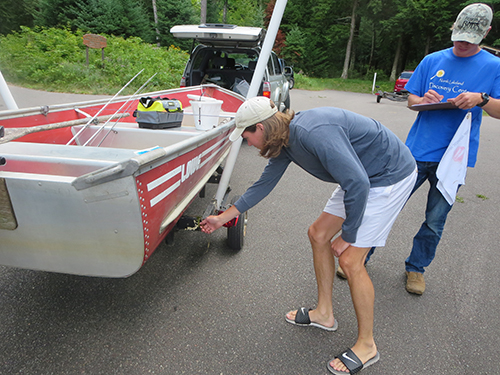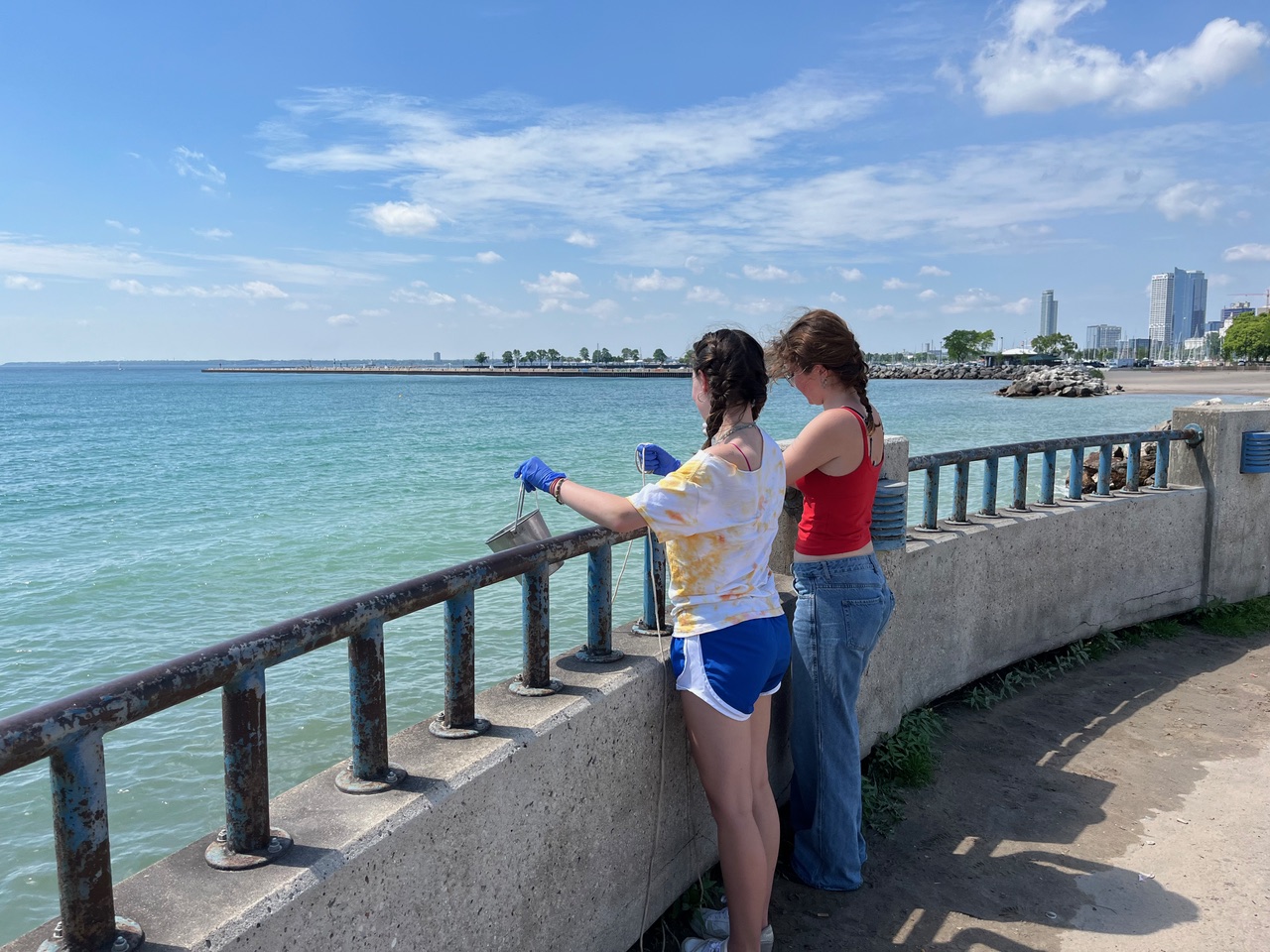Boating is a way of life for many Wisconsinites. Our state boasts more than 2,000 lakes with public access, and 624,882 boats are registered here.
Of course, the best way to enjoy fun, fishing and friends is to do so in a way that minimizes the potential spread of aquatic invasive species (AIS), unwanted invaders that can take a toll on native species, water quality and more.
Said Tim Campbell, an AIS outreach specialist with Wisconsin Sea Grant and the University of Wisconsin-Madison Division of Extension, “Once invasive species are here, recreational boaters are the primary way they move around the landscape.”
This is where well-designed boater education campaigns come in. They inform boaters about legal requirements and good habits to adopt to make sure that good times on the water do not end up harming local ecosystems. Methods include signage at boat landings, in-person efforts by boat inspectors and advertising campaigns.

A Clean Boats, Clean Waters inspector chats with a boater in Vilas County. (Photo: Emily Held, North Lakeland Discovery Center)
Wisconsin’s leading AIS prevention effort is the “Clean Boats, Clean Waters” initiative led by the Wisconsin Department of Natural Resources and the University of Wisconsin-Madison Division of Extension. Wisconsin Sea Grant partners with Extension and the DNR to implement a Great Lakes watercraft inspection program and to evaluate outreach efforts.
According to a recent survey administered by the Natural Resources Institute Evaluation Service Unit within UW-Madison Division of Extension, these education efforts are quite effective.
Said Evaluation Specialist Evelyn Hammond, 1,498 surveys were mailed in 2018 to a random sample of registered boat owners in Wisconsin, and 532 completed surveys were returned. A response rate of 36% is very good, said Hammond, especially for a detailed survey with 35 questions.
A formal report on the survey will be available on the Wisconsin Sea Grant website within the next few months. In the meantime, said Campbell and Hammond, the results are encouraging in terms of boaters’ understanding of Wisconsin laws and their commitment to take preventive measures each time they take their boats out on Wisconsin waterbodies.
“The results confirm that what we’re doing is on the right track for increasing boater compliance [with AIS-related laws],” said Campbell. “For the most part, people are ‘usually’ or ‘always’ taking action to prevent the spread of AIS; few people fall into the ‘never’ or ‘rarely’ category.”
He stressed that the survey is not new, but rather the latest in a series of similar evaluation efforts—conducted via mail or phone—stretching back about a decade. Wisconsin AIS professionals now have about 10 years’ worth of data that track boater behaviors, awareness of laws, and the like.
Said Hammond, “People know that aquatic invasive species are a threat and have negative effects. They are aware of the impacts that AIS have on the lakes and on the environment in general.”
The current survey instrument was designed by Bret Shaw, an associate professor of life sciences communication at UW-Madison who is also an environmental communication specialist with the Division of Extension, in coordination with DNR and Extension AIS partners.
Campbell said that, to the best of his knowledge, Wisconsin is the only state doing this kind of systematic, randomized and repeated survey of boaters statewide.
Many states survey boaters in person at landings. While that approach has value, the results are not reflective of what the average boater believes since inspectors are surveying boaters at the same sites where they provide face-to-face education. With Wisconsin’s abundance of lakes, it is not possible to provide boat inspectors and surveys at each one, so the randomized mail survey is the best approach.
He would like to see Wisconsin’s approach replicated elsewhere. “What we’re hoping for is an easily repeatable process that any state can use. I would love to see other states start doing similar work so we can better compare successes and places we can improve by evaluating our programs in the same way,” Campbell said.
While the picture in Wisconsin is overall a positive one—there has been no significant spread of AIS in Wisconsin waters in the last several years—study administrators found that there is still some confusion surrounding the legality of a few specific practices, such as the handling of bait. This information lets AIS professionals know where they should fine-tune their communication efforts.
For questions about the boater survey, contact Tim Campbell at 608-265-3727.





